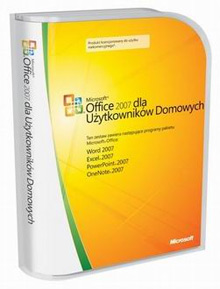Pay-As-You-Go Software for the Developing World
In South Africa, a legal copy of the Professional version of Microsoft Office can cost more than $700. That makes the software beyond the reach of many personal-computer users, and even small businesses. So Microsoft South Africa has launched a “Pre-Paid Edition” of Office that comes bundled with new computers. A buyer can choose to pay $30 for three months of usage, and then resubscribe to the service every three months after that.

“This is part of Bill Gates’s vision to get more people around the world using computers,” says Cyril Belikoff, a business group executive at Microsoft South Africa. “We’re asking, ‘How can we make technology affordable, so that the next one billion users of personal computers can be more productive and add value back into their local economies?’”
The company began piloting the prepaid program last year and, based on positive customer feedback, formally launched it this month.
Microsoft didn’t have to look far for a business model for prepaid software. In South Africa, more than 90 percent of all mobile-phone users pay for their service this way. “It’s a simple model to adopt,” Belikoff says. “Explaining to customers what ‘prepaid’ means isn’t really required.”
Microsoft is also trying the prepaid approach with its Office software in Romania, another country where Microsoft feels that the cost of its software is beyond the reach of many potential customers. It’s also a country where pay-as-you-go cell-phone use is popular.
Pay-as-you-go isn’t Microsoft’s only approach to tackling the difficult markets of the developing world. Microsoft’s FlexGo program, which was launched last year, allows buyers in the developing world to purchase new computers, loaded with Microsoft software, on credit. Users then buy access to their own machines with either prepaid cards or a monthly subscription. Brazil, China, India, and Vietnam are among the countries where FlexGo has been rolled out.
“The concept of paying in small amounts for what you’re going to use makes some sense, especially in South Africa, where Office is prohibitively expensive,” says Jaxon Rice, a Web developer based in Johannesburg. “And the thing is, once you subscribe, it’s hard to unsubscribe when all your documents are in that format.”
Others are more pessimistic about whether South Africans will pay as they go for software. “I’m not sure South Africans will go back to the shop and buy a recharge voucher just to carry on using Office,” says Alastair Otter, the editor of Tectonic, a website devoted to technology news out of South Africa. “People are more likely to spend their money on cell phones or other mobile devices, rather than on a piece of software.”
Otter also points out that 35 percent of all software in South Africa is thought to be pirated. For comparison, China’s piracy rate stands above 90 percent, while in the United States, the rate runs at around 22 percent. In South Africa, it can be hard to get people to shell out for software that they can get much cheaper, or even for free–that is, illegally. But Microsoft’s Belikoff disagrees with Otter. “If you think about the end user, they don’t want to pirate software. If they can afford it, they’re happy to pay for it. We’re offering a way for people to play the game legally.”
There may also be another driving factor behind Microsoft’s decision to test a pay-as-you-go model: the rise in popularity of open-source software. In February, the South African government affirmed that not only would it implement open-source software solutions whenever possible, but it would also attempt to replace current proprietary software with open source.
Numerous public and private efforts are under way to roll out open source in South African schools. One of the biggest of these projects is tuXlab, which has already installed open source in more than 200 schools around the country. “Over the past three years, Microsoft has been trying to get its mind around what strategies to put in place to maintain the market share they have in South Africa,” says tuXlab founder Hilton Theunissen. He says that open source gives South Africans the opportunity to own and develop their own software, instead of relying on Microsoft.
Theunissen points out that open-source software is quickly becoming widely available to the general public in South Africa. “We have these vending machines in five public malls where you can go and get open-source software,” he says. “You simply take a blank CD, go to this unit, and pop in the disc. Five minutes later, you walk away with more than 890 applications. And it’s yours. You can even make a copy for the whole street.”
As the education program manager for Canonical, Richard Weideman works on the development of a Linux distribution called Edubuntu. Weideman, a South African, notes that “Microsoft’s traditional business model is now under threat from the uptake of open-source software that’s happening around the world. That’s why they’re exploring these service-based models.”
Microsoft’s Belikoff says that the company will evaluate the launch of its Pre-Paid edition of Office in a few months’ time.
Keep Reading
Most Popular
Large language models can do jaw-dropping things. But nobody knows exactly why.
And that's a problem. Figuring it out is one of the biggest scientific puzzles of our time and a crucial step towards controlling more powerful future models.
The problem with plug-in hybrids? Their drivers.
Plug-in hybrids are often sold as a transition to EVs, but new data from Europe shows we’re still underestimating the emissions they produce.
Google DeepMind’s new generative model makes Super Mario–like games from scratch
Genie learns how to control games by watching hours and hours of video. It could help train next-gen robots too.
How scientists traced a mysterious covid case back to six toilets
When wastewater surveillance turns into a hunt for a single infected individual, the ethics get tricky.
Stay connected
Get the latest updates from
MIT Technology Review
Discover special offers, top stories, upcoming events, and more.